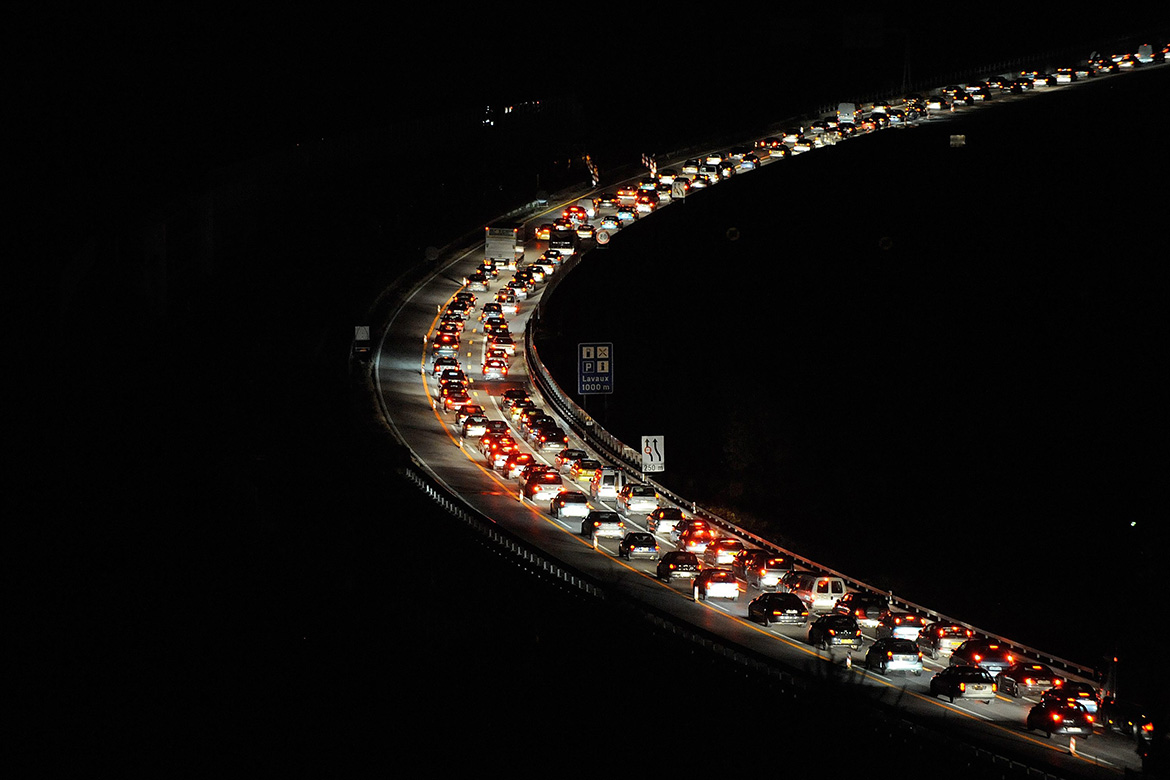MOBILITY
Working from home is less green than it seems
The rise of remote working has changed Swiss mobility habits but does not necessarily reduce CO2 emissions.

More remote working hasn’t prevented evening traffic jams on the A9 to Lausanne. | Photo: Dominic Favre / Keystone
The home office is the embodiment of many hopes: environmentally friendly, balancing work and life, cutting costs. What’s for sure is that it’s popular in Switzerland. According to the Federal Statistical Office, working from home – both part-time and full-time – has risen in the last 20 years to include a quarter of the active workforce employed before the covid pandemic. In 2020, this shot up to almost 35 percent.
Was this change associated with a reduction in CO2 emissions, to which traffic in Switzerland contributes one third? ‘Not really’ is what has been shown by a team of scientists that formed around Axel Franzen at the University of Bern, where he has been working on data from the pre-pandemic period.
The first conclusion of the study is no real surprise. The rise in working from home leads to a reduction in commuter journeys. A person working partially from home therefore makes 21 percent fewer professional trips. However, and this is the most interesting observation, the total number of kilometres travelled in Switzerland, by all types of vehicle and mobility combined, has not reduced among teleworkers. This seeming paradox is explained by what is known as the ‘rebound effect’. “These individuals make more journeys for personal reasons, for example, shopping and leisure”, says Fabienne Wöhner, who headed the study.
The study also looked at traffic jams. “Traffic jams mean pollution, accidents and lost time, so the consequences relate to the environment, our health and the economy”, says Wöhner. Although the rise in home working has led to a slight improvement in commuter traffic in the evenings, the morning traffic jams are tending to become worse. “Our hypothesis is that despite increasingly flexible working hours, commuters are adapting their mobility to the rhythm of their children and their loved ones”, she says.
Change that must be accounted for
New data has just been released on mobility including the pandemic period. Wöhner has yet to conduct an in-depth analysis, but she has already identified some trends. “Logically, the results are impacted by the partial lockdown, which not only strongly boosted the portion of remote workers but also limited personal trips”. With these specific circumstances, the rebound effect was minimal and did not make up for commuter trips.
The Institute for Transport Planning and Systems at ETH Zurich is also looking closely into the journeys made in the country. Several such studies made there by Kay Axhausen have explored the impact of the covid pandemic on the choice of mobility in Switzerland. One of them, comparing trips taken by more than 1,000 people in the eight weeks before the health crisis and up to six months after it started, shows an overall reduction in the distance of around 60 percent during the first lockdown.
“The intensification of remote working is a phenomenon that is set to last”, says Axhausen. “It’s having clear consequences for mobility. The Swiss move around differently and at different times of the day”. Rather than talking of a rebound effect, he prefers to call it a ‘reorganisation of mobility’. In his view, this change is of importance when drafting transport policy.
At the University of Bern, it’s estimated that the lessons learned from research may provide precious information for policy-makers. “Our results give reason to think that, on their own, neither the digitalisation of the world of work nor the growing practice of working from home will reduce traffic or prevent traffic jams; they must therefore be accompanied by other measures, for example, road pricing”, says Wöhner.




